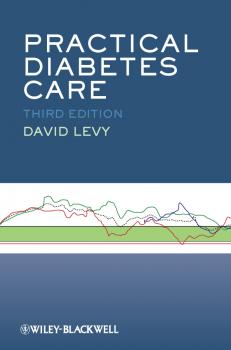ТОП просматриваемых книг сайта:
David Levy
Список книг автора David LevyАннотация
Family caregiving expert David Levy sets forth how to evaluate priorities, understand options, and face bedrock issues (legal, financial, emotional, social), so caregivers can make wise and informed decisions for their loved ones, while gaining peace of mind from knowing they did the best they could under the circumstances.Drawing from over twenty-five years of experience, Levy provides caregivers with a model for effective planning and problem-solving, focusing on the nonclinical aspects of caregiving, which are often neglected by medical professionals: Caring for young and old victims of disability, illness, and chronic disorders Finding ways to make our healthcare system work Assembling core information about a loved one's life Developing a realistic view of how much care a loved one needs today and may need tomorrow, and understanding that continuum of care Locating resources that can make a difference in making sure a loved one's care-needs are met Finding a good family caregiver support group Overcoming the roadblocks the caregiver's feelings of distress and failure can create Taking a practical approach to that overused phrase «Take care of yourself.» [b]David Levy, JD is a gerontologist and a recognized family caregiver expert. Levy holds a Doctor of Jurisprudence and is a Florida Supreme Court Certified Family Mediator in family caregiving and a certified Family Conflict Dynamics Profiler. He facilitates weekly family caregiver support groups and counsels family caregivers, both pro bono and privately.
Аннотация
Highly Commended at the British Medical Association Book Awards 2016 3 am call: «Mrs X has a blood sugar of 23. Come and deal with it.» «I think my insulin pen is called something like Solostar.» The respiratory doctors started high dose prednisolone, and the patient’s glucose is 18. What is the blood glucose target for this patient admitted with an acute coronary syndrome? Do you struggle with common diabetes problems in hospital practice? The Hands-on Guide to Diabetes Care in Hospital is an ideal companion for ward practitioners, providing answers to these and many other practical diabetes problems, helping you to deliver safe and effective care to patients. Using the best current UK and international guidance, The Hands-on Guide to Diabetes Care in Hospital presents succinct guidance on acute diabetes problems, blood glucose management, acute medical and surgical problems commonly complicated by diabetes and insulin and non-insulin agents, as well as preparing for discharge to the community. With top tips, key points, questions to ask, treatment and follow-up advice in each chapter, this is an essential resource for all medical trainees and students who treat diabetic patients. Ward-based nurses, diabetes specialist nurses and pharmacists will also find a lot that is relevant to their practice.
Transparent Conductive Materials. From Materials via Synthesis and Characterization to Applications - David Levy
Аннотация
Edited by well-known pioneers in the field, this handbook and ready reference provides a comprehensive overview of transparent conductive materials with a strong application focus. Following an introduction to the materials and recent developments, subsequent chapters discuss the synthesis and characterization as well as the deposition techniques that are commonly used for energy harvesting and light emitting applications. Finally, the book concludes with a look at future technological advances. All-encompassing and up-to-date, this interdisciplinary text runs the gamut from chemistry and materials science to engineering, from academia to industry, and from fundamental challenges to readily available applications.
Аннотация
This new and completely revised third edition is a concise, systematic and highly practical guide to the care of patients with Type 1 and Type 2 diabetes. Clinically and problem-based, it covers emergency, inpatient and ambulatory diabetes care in the hospital and community, focusing particularly on difficult, grey and contentious areas of management, and seeks to guide advanced practitioners through problems that are not always emphasised. Up to date clinical trial results have been incorporated, as well as concise discussions of lifestyle approaches to diabetes management, and it includes a new chapter on psychological problems in diabetes. It is now fully referenced with PubMed PMID numbers and all HbA1c measurements are quoted in DCCT and IFCC units. It will be valuable for foundation year and specialist trainees in general medicine, diabetes and endocrinology; community and hospital diabetes specialist nurses and nurse practitioners; hospital-based ward staff in specialist and non-diabetes-specialist departments, especially cardiology and emergency medicine; and general practice diabetes leads and general practitioners with a specialist diabetes interest. It will be equally valuable for hands-on reference use in the clinical situation, and for clinicians in hospital medicine and general practice studying for postgraduate diplomas and examinations.





